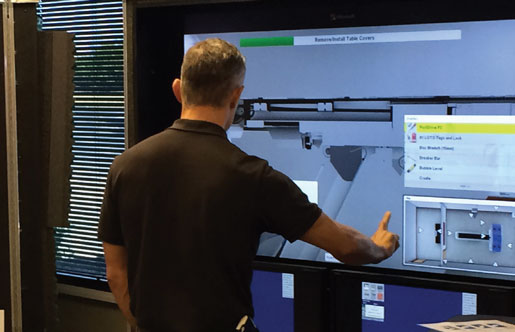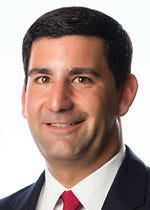Engineers Can Tinker with an Imaging System Virtually
GE Healthcare develops a futuristic training method to help engineers learn how to fix and maintain its capital equipment systems.
June 20, 2016

GE Healthcare develops a futuristic training method to help engineers learn how to fix and maintain its capital equipment systems.
It takes time, money, and travel to train biomedical engineers who work at healthcare facilities on the wide range of medical equipment they maintain. But budget cuts, pressure on hospital margins, packed work schedules, and mergers in the healthcare industry that add more systems to responsibilities, mean time and money are often in short supply.
GE Healthcare, one of the largest providers of imaging systems and medical equipment, has an answer to these challenges: the Multiple Re-configurable Training System (MRTS). MRTS is a simulator that allows biomedical engineers to learn and repeat tasks on a variety of medical systems using a touch-sensitive screen. The simulator sits within a mobile training center that can be stationed in convenient locations, like a healthcare facility. This cuts down on the need for travel and makes training more accessible and cost-effective.
Rob Reilly, vice president and general manager of services at GE Healthcare, told MD+DI that the inspiration for the simulator came from the company's own need for it. "We've got close to 10,000 field engineers (FE) around the globe and our training hub, our center of gravity, is Milwaukee. It's not always practical to have an FE from China or an FE from Africa fly to Milwaukee to be trained . . . It was a big need internally that we were trying to solve and once we solved it, we realized, 'Wow, this also solves a lot of the inhouse and broader market need."
Start planning your fall schedule now. Register for the MD&M Minneapolis Conference, September 21-22. |
Field engineers in different locations sit together in a virtual classroom, learning from an instructor via distance learning video conferencing. After absorbing the theory and gaining a basic understanding of how the medial equipment system works, the engineers can then try their skills on the simulator at their own location. The simulator replaces the need to fly to one training facility to test out book learning on a physical machine. Another charm of MRTS is that "you can do things wrong without 'breaking' anything," Reilly said.
While the idea is novel to healthcare equipment servicing, it borrows from the simulation training that is common in the military. There is a major veteran presence at GE Healthcare--Reilly pointed out that almost 20% of employees in the Americas business are military veterans--and MRTS was inspired by that experience. "You don't work on a nuclear submarine for the first time without having simulated it," he noted.
|
Reilly |
A big part of creating MRTS involved observational research, to include the smallest details of each system. "You really want to make it as close to reality as possible. The noises, the haptics, the location of the screws," Reilly said.
For now, MRTS covers GE imaging systems, with plans to expand to other large systems from major players like Toshiba and Siemens. Training simulation for GE's CT and nuclear medicine systems is available, with MRI systems being added now. Next priorities will include PET and X-Ray systems. "We'll cover the full GE portfolio and then certainly the systems that have a high installed base from a multi-vendor perspective," Reilly explained.
The simulator training is also part of GE's new product introduction cycle, which means that technical documents and service manuals will be formulated with simulator education in mind.
As with many new technologies, there seems to be a generational preference for the simulator that skews younger. Field engineers who have a career's worth of tactile experience maintain medical equipment sometimes prefer to take apart a physical machine, "have grease on [their] hands," Reilly said. Yet in studies, GE Healthcare has found that groups of engineers who learn about a new machine using the simulator score higher on retention and learning than groups trained on a physical system.
Going forward, Reilly sees a large role for simulated training in healthcare. "I just think that it's the future . . . Certainly aviation is already there. We're catching up."
[Images courtesy of GE HEALTHCARE]
About the Author(s)
You May Also Like



